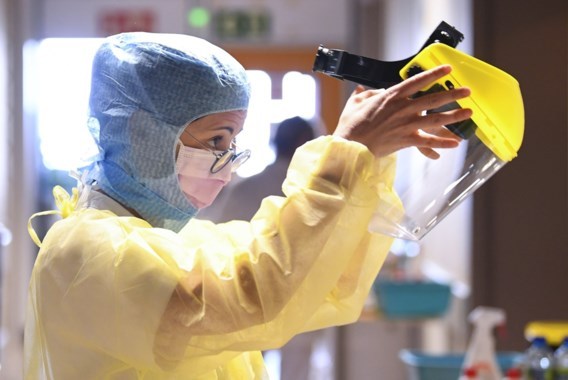As the number of new Covid-19 patients admitted to hospital continues to decrease slowly, the pressure on intensive care units continues to climb, and the number of deaths is still rising sharply, according to Sciensano’s latest figures on Sunday.
Between 29 October and 4 November, an average of 10,512.3 new people tested positive per day over the past week, which is a 35% decrease compared to the week before.
The total number of confirmed cases in Belgium since the beginning of the pandemic is 494,168. The total reflects all people in Belgium who have been infected, and includes confirmed active cases as well as patients who have since recovered, or died as a result of the virus.
Over the past two weeks, 1,623.5 infections were confirmed per 100,000 inhabitants, an increase of 45% compared to the two weeks before. However it is lower than the weekly average of 1,696.8 reported yesterday.
Between 29 October and 5 November, 618.4 patients on average were admitted to hospital, a 5% drop from a daily average of 633.9 the week before.
In total, 6,893 coronavirus patients are currently in hospital, 315 fewer than yesterday, continuing the slow downward trend. Of those patients, 1,464 are currently in intensive care, which is five more than the day before. Patients on a ventilator number 879 – 48 more than yesterday.
From 29 October to 4 November, an average of 165.3 deaths occurred per day, a 66.4% increase on the week before (22 to 28 October), when an average of 138.1 deaths were recorded per day. However while the number of fatalities is rising, the rate of increase is slowing down.
The total number of deaths in the country since the beginning of the pandemic is currently 12,907 – 199 more than yesterday.
Since the start of the pandemic, a total of over 5.3 million tests have been carried out. Of those tests, 49,100 were taken over the past week, with a positivity rate of 26.4%. This means that more than a quarter of the people who get tested receive a positive result.
The percentage of positive results came down slightly from 27.6% last week, and coincides with a drop in the number of tests being carried out, after the authorities decided not to test patients with no symptoms. But though fewer tests are being carried out, those that are are now less likely to be positive.
Since 21 October, only people with coronavirus symptoms are being tested. That means that some new infections, which used to be detected, are missing in the statistics, Sciensano said. The public health institute will use statistical models to calculate those infections that are not registered under the new testing strategy.
The reproduction rate, meanwhile, has been coming down since 23 October, and now stands at 0.94, down from 0.99 yesterday and its lowest level since 2 September. That rate (Rt) is the rate at which the virus spreads. Since it is now below 1.0, the virus seems no longer to be growing in the population.
The Brussels Times

